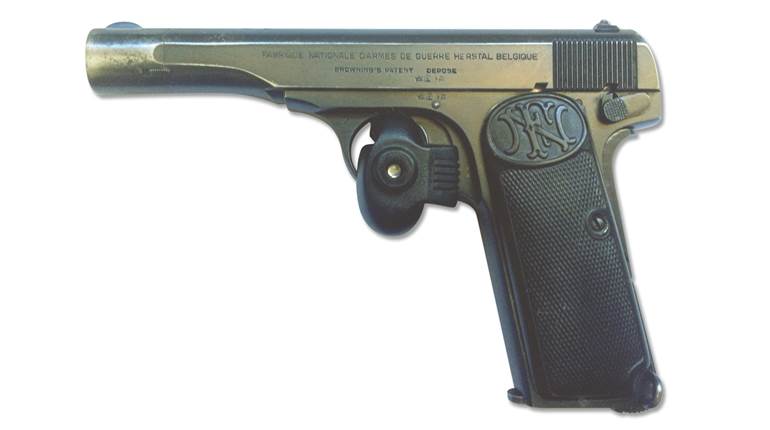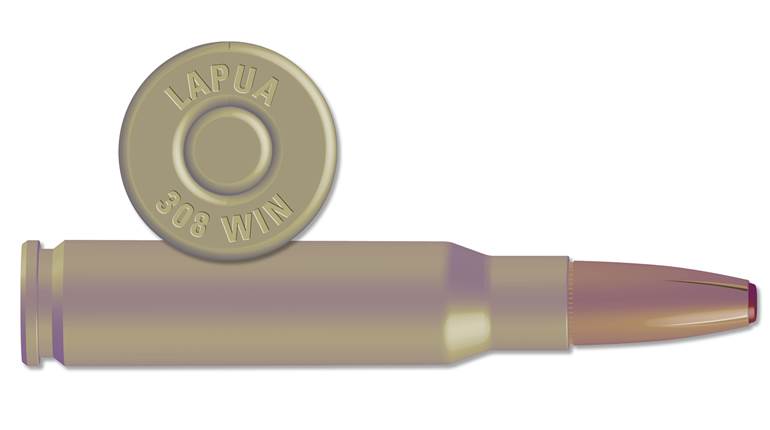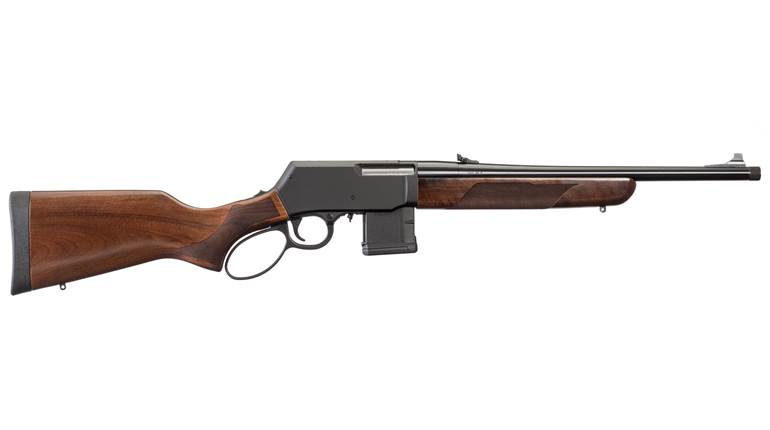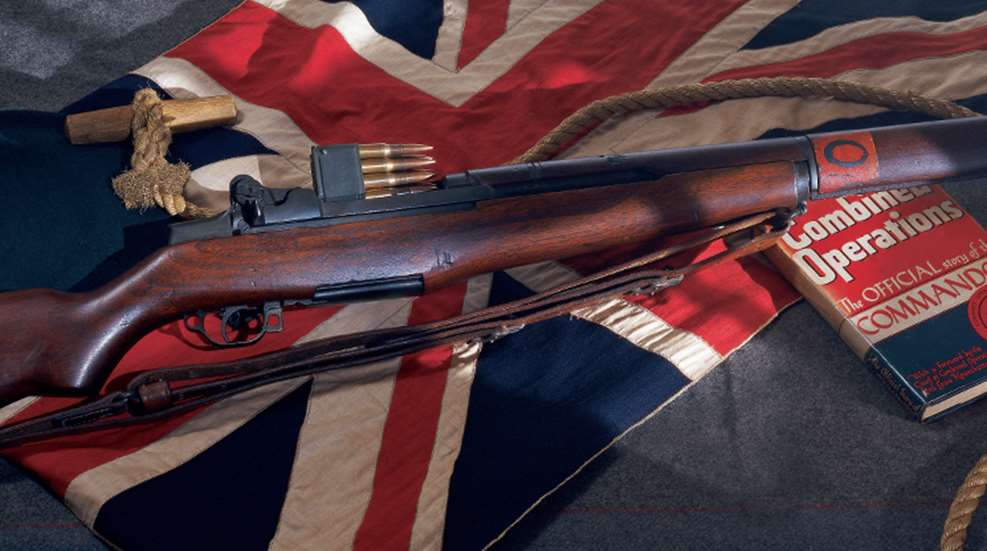
This article was first published in American Rifleman, April 2002.
On December 7, 1941, Japan attacked the United States at Pearl Harbor, changing the world forever. America joined the war against the Axis powers of Japan, Germany and Italy. From the onset of hostilities in September of 1939, America had remained officially neutral while clearly sympathizing with England.
In May 1940, the British found themselves in dire straits following the battle of Dunkirk. The rescue of 338,000 troops, without their arms, represented nearly the entire force that was expected to defend the island nation from German invasion. Small arms were desperately needed. President Roosevelt and Congress used a technical loophole in the neutrality laws to aid Britain, allowing the sale of “obsolete and surplus arms and equipment.” Large quantities of U.S. M1917 rifles, Browning Automatic Rifles and machine guns were sent to England following the Dunkirk evacuation.
In March 1941, the U.S. Congress passed the Lend-Lease Act, permitting direct material support to Allied nations. It was cited as “An Act to Promote the Defense of the United States.” Authorized under Lend-Lease was “Any weapon, munition, aircraft, vessel or boat.” An initial appropriation of $7 million was authorized to “lend” war matériel to Great Britain and other Allied nations, thus establishing America as the “Arsenal of Democracy” for the free world.

Nearly 3 million rifles, carbines, machine guns, submachine guns, pistols and revolvers were shipped to England, the U.S.S.R., Free French forces, China, Canada and the Netherlands forces in the U.K.—with slightly more than 2 million of those sent to the British Empire.
Large quantities of M1 Garand rifles were to be transferred to England. The first appropriation was made on March 27, 1941, and authorized transfer from current production and existing stocks by random requisition. After a second appropriation on October 28, 1941, a percentage allotment of current production was authorized. These transfers continued even after the declaration of war against Japan until a decision in March 1942 that all .30-cal. arms be allotted to the U.S. Army. Transfers were officially terminated at the end of June 1942. In all, a total of 38,001 M1 Garand rifles were shipped to England under Lend-Lease. These were the “British Garands,” which in recent years have become highly sought after by collectors.
Distinctive Marking of Non-Service Pattern Small Arms
British military procedure stipulated that non-standard arms of all types be marked in a readily visible, distinctive manner. The regulations that applied to the Garands were:
“Class I. Arms which do NOT fire .303-inch ... British Service ammunition will be marked with a 2-inch band of RED paint. On this band will be stencilled in BLACK the calibre of the weapon.” [capitals in the original]
“(I) Rifles, Class I 2-inch band round fore-end and front handguard between upper sling swivel and nosecap.”

A red band was painted around the front handguard between the lower band and front handguard ferrule. The painting usually appears hastily done with no attempt to mask the borders for uniformity. Various shades of red have been observed, from a deep brick color to ocher. In addition, the caliber has been observed painted in black as .30 and .300, with and without the decimal point.
Few Lend-Lease rifles encountered today have any of the red band remaining. The paint did not adhere well to the oiled walnut of the handguard. Furthermore, when these rifles were imported to the States, they were coated with preservative for shipping, which softened the paint. When the preservative was removed by the buyer, most of the paint came off with it. Some purchasers even scrubbed off “that ugly paint mark.” Traces of red, however, can sometimes still be found underneath the guard where the paint slopped into the operating rod channel. Contrast that with today’s collectors willing to pay a premium for an example with the red paint!
Sitting Out the War
By the time Garands began arriving in England, the threat of an immediate German invasion had receded. The result was that a large portion of the Lend-Lease M1s spent the war in British depots, unissued and undisturbed but for the red paint. Others were reportedly issued to the Home Guard and RAF airfield security units, both of which would not see combat. Reportedly, many came back to the United States in their original shipping crates.
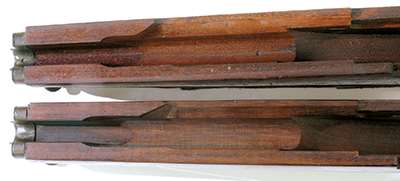
Barrel Proofmarks
The distinguishing characteristic of Lend-Lease rifles is, of course, the British barrel proofing stamps. In fact, these M1s were called “British Garands,” and were disdained by most collectors because of that “defacement.” The offending marks were viewed in the same way import stamps are today—as having reduced the guns’ value. In fact, many collectors chose an unmarked M1 of average condition over an excellent one with British Proofs.
Few M1 collectors understand that these proofmarks are not military but commercial in origin, and were not applied when the rifles reached England during World War II. The Gun Barrel Proof Act that governed them stipulated that small arms could not be offered for sale, exchanged or exported until they were properly proofed according to British Rules of Proof. Proof testing and marking of the Lend-Lease Garands did not occur until the mid-1950s when the British government sold them to the arms dealer Sam Cummings for export back to the United States. Years later, when Cummings’ Interarmco—later Interarms of Alexandria, Va.—became large and famous, the company’s major European depot was located in England.
Garands purchased all over Europe and the Middle East went through this facility on the way to America, and had to be proofed according to British law. These later imports were marked on the front of the barrel between the rings of the gas cylinder.
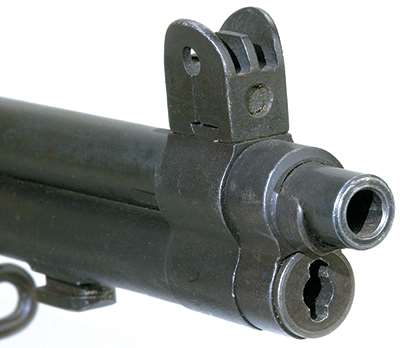
The actual proofing was performed in two locations, the Birmingham Proof House, also known as Guardians Company, and the London Proof House, also known as Gunmakers Company. The actual testing and the information applied to the rifle was the same at both houses, but each had its own marking style. The stamps were applied to the 1941-42 rifles on the chamber area of the barrel, visible when the operating rod is to the rear.
First in line is the nitro proofmark distinctive to the house doing the tests. The London mark is a raised arm holding a scimitar over the letters NP, the Birmingham mark is a crown over the letters BNP for British Nitro Proof. Second in the sequence is the caliber. London used a brief “30,” Birmingham went all the way with “.30/06.” Third in line is the length of the cartridge case in inches. London again used the simpler mark 2 1⁄2" while Birmingham recorded the decimal length as 2.494". Fourth is the pressure of the nitro proof charge in tons per square inch. It was calculated in long tons, or about 2,240 lbs., and yielded 40,320 lbs. per square inch by the British axial method, or about 50,000 p.s.i. by the American radial system. The London house used the short notation “18 TONS,” Birmingham used the notation “18 TONSPER.” Birmingham added a fifth mark, crossed swords with the number of various inspectors and a date code letter. London did not.
Birmingham Date Code
The “Private View Mark” and the date code used by Birmingham confirms the time period of the marking of the Lend-Lease guns. This Birmingham code was held in tight secrecy, even from British police investigating gun crimes, until a German collector finally broke the code and published it.
The letter in the left angle of the crossed swords is the year code, beginning with A in 1950 and progressing (letter I omitted) to Z in 1974. The letters begin again with A in 1975, but the crossed swords framework was changed to a segmented circle. The letter on the right is always B for Birmingham, and the digit at the bottom is the seniority of the inspector, from 1 to 8. In the drawing, the code of the “FB 1” view mark signifies that the rifle was viewed during the year 1955 by the Chief Inspector. This version of view marking began in 1950; a slightly different system was used until 1941, and no export proofing was done from 1942 until well after the war had ended.
Other Marked Areas
In addition to the barrel proofmarks, the Rules of Proof stated that both the receiver and bolt be marked. Birmingham used its BNP proof to mark the top of the receiver ring directly above the chamber; London used a crown over an intertwined GP to mark the right side of the receiver ring under the hump of the operating rod. Both houses stamped the right lug of the bolt.
The proofing dies, however, were no match for the hardened steel of the M1 Garand’s receiver and bolt, and wore out in short order. Only a small fraction of Lend-Lease rifles show these proofs or parts of them; most carry only a dent or smudge. Many show no evidence at all, suggesting that both houses eventually gave up the attempt.
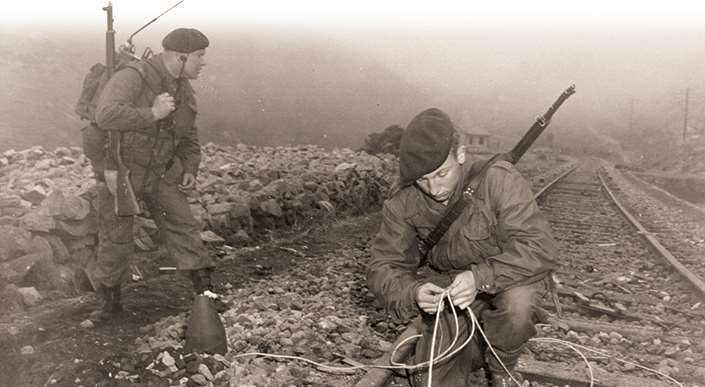
Import and Sale
During the 1950s, interest in the M1 rifle increased sharply. Major demand came from U.S. martial arms collectors who wanted an example of every U.S. arm, and World War II collectors had to have a Garand. Unfortunately, there were not nearly enough on the collector market to satisfy them, and the rifle’s status as the current service rifle prevented more than token government sales.
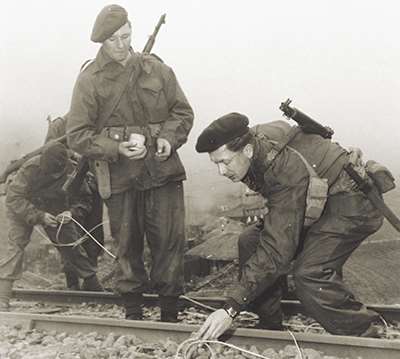
Interarms was one of the first to satisfy this demand. Because the British government would not sell surplus arms to foreign dealers, Cummings bought the moribund arms firm of Cogswell & Harrison in 1957. Through that firm he was able to purchase surplus British M1s. He first imported M1 rifles in 1958 and began to sell them in February 1959 through his company, Ye Old Hunter, in Virginia. Mail order price was $79.95 for standard and $89.95 for “near-mint.” He also sold some to other dealers, notably Klein’s in Chicago and department stores such as Sears, Roebuck and Montgomery Ward. A competitor of Interarms, Winfield Arms in Los Angeles, also purchased M1s from overseas during the same time period as they advertised them for sale at $97.50. The total number of M1 rifles imported from the late 1950s through early 1960s is unknown at this time.
Collector Notes
Most known examples of the Lend-Lease British Garands are found in the 300,000 to 600,000 serial number range, however, rifles with slightly higher and lower numbers have been encountered. Several changes in components took place during the September 1941 to May 1942 period when these rifles were manufactured. An understanding of these features is important in identifying an original British Garand.
First, all British Garands have the aforementioned barrel proof marks stamped on the chamber end of the barrel, visible when the operating rod is to the rear. In addition, all M1 rifles of this period were equipped with a forged and milled trigger guard, seal over the front sight screw, and a solid, single-slot gas cylinder lock screw.
Upon U.S. Ordnance acceptance of an M1 rifle, the cartouche of the Springfield Armory Commanding Officer and an Ordnance acceptance emblem was stamped into the left side of the stock below the elevation knob. The cartouche found on all M1 rifles of this period was that of Brig. Gen Gilbert H. Stewart; an “SA” over “GHS” enclosed in a box. Two different-diameter Ordnance emblems were used. The earliest is the larger and is approximately 23/32" in diameter; the later is smaller and is approximately 7/16" in diameter. The transition began in December 1941, and an overlap of both sizes continued for several months.
Another change that began during this period is a shortening of the stock’s barrel channel. This area is the narrow section directly to the rear of the stock ferrule. The “long” channel is approximately 2 3⁄8" in length and the “short” channel is approximately 1 5⁄8". A several month overlap existed.
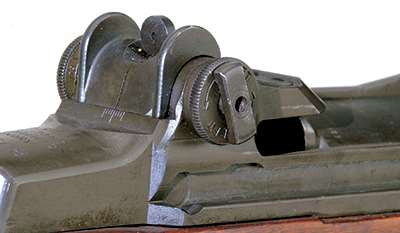
The rear sight nut was another component whose design changed during this period. The nut used on early M1 rifles was a slotted nut; collectors call this a “flush nut.” Sight adjustment was difficult with this design. A change was made to a design that collectors have named the “Type 1 lock bar.” This changeover began in early 1942. A several month overlap in usage took place. Both types of nut made use of the early “short pinion,” which is shorter in length and the threaded portion is smaller in diameter than the more common “long pinion” and second type lock bar adopted in late 1942.
While collectors ignored, even shunned, the British Garands as recently as 10 years ago and disdained the guns’ barrel proofmarks, they now realize that the Lend-Lease British Garands, as a group, are among the most original, best-condition M1 rifles available. The price of these rifles has risen along with collector interest, and those rifles that feature the red painted stripe command a premium. The originality, condition, and early date of manufacture have made them very desirable Garand variants.

The Garand Collectors Ass’n
Scott Duff is the author of The M1 Garand: World War II and The M1 Garand: Post World War II, likely the definitive two volumes to date on M1 rifles. The author would like to thank Robert Seijas for his research contribution to this article. Bob is Chairman of the Board of Directors of the Garand Collectors Association (GCA). The NRA- and CMP-affiliated GCA is devoted to the study of the M1 rifle and its inventor, John Cantius Garand, and publishes a 24-pp. quarterly journal. Authors Bruce Canfield and Scott Duff are members of the GCA Board of Directors and, along with Seijas, are contributing writers. GCA membership inquires should be sent to: GCA, P.O. Box 187, Angola, IN 46703. The GCA website address is thegca.org.












